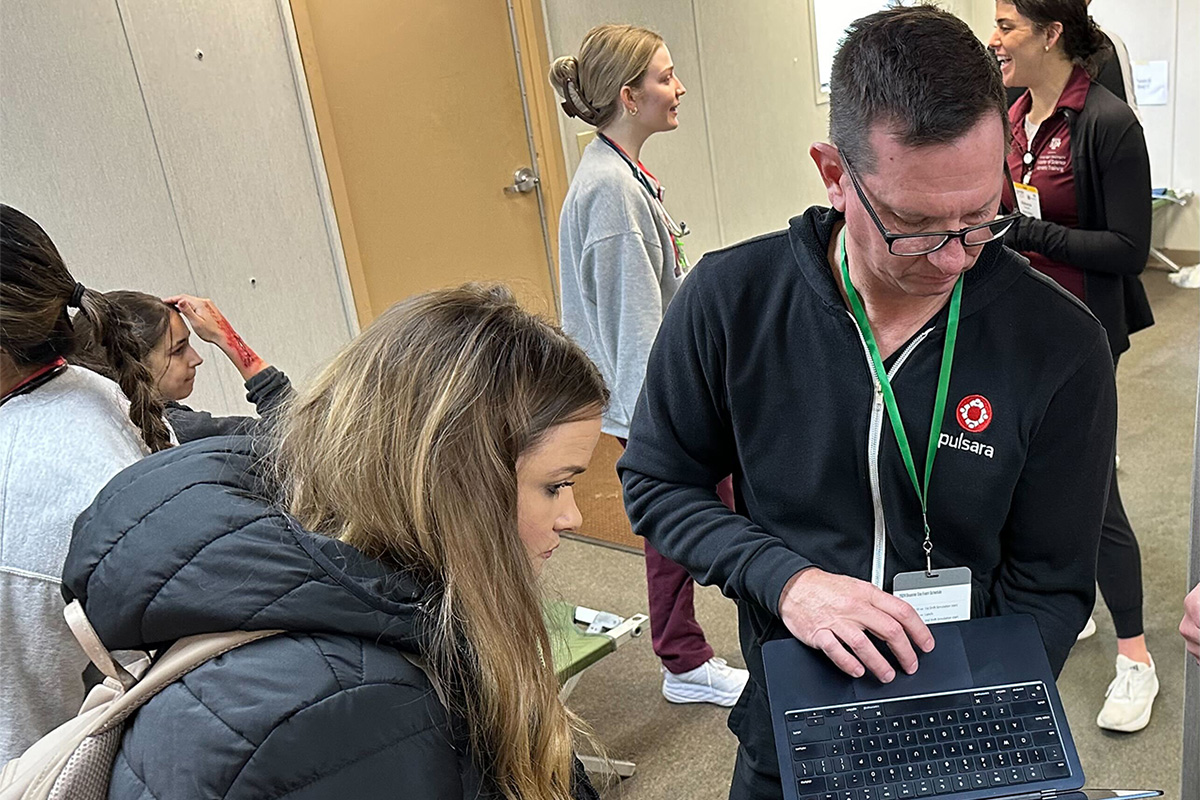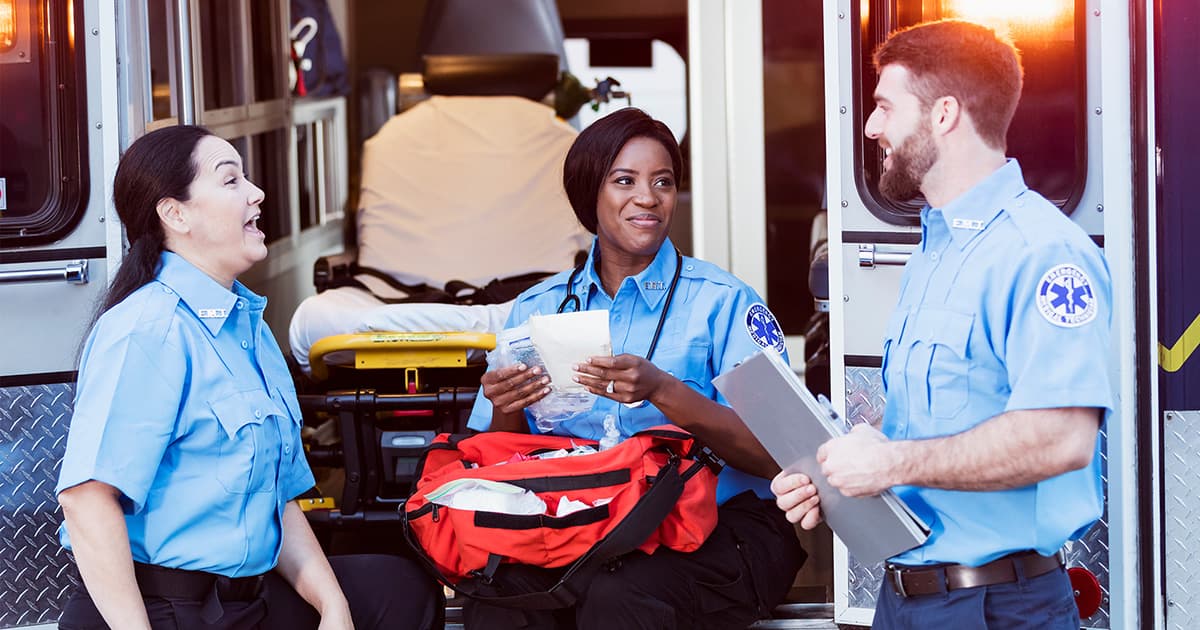Does Your Team Feel Unseen? Close the Leadership Disconnect with 2-Way Communication
Editor's Note: In July 2025, EMS1 and Fitch & Associates released their annual EMS trend survey, What Paramedics Want, proudly sponsored by Pulsara....
3 min read
 Team Pulsara
:
May 17, 2024
Team Pulsara
:
May 17, 2024

EDITOR'S NOTE: Special thanks to Kinsie Clarkson (Pulsara's Product Marketing Specialist, 2020-2025) for writing today's blog post. You can connect with her on LinkedIn.
__
While no one wants to think about the probability of an impending disaster, emergency managers and healthcare professionals know that mass casualty incidents are an eventuality. It’s not if they’ll happen, but when. In order to prepare future healthcare professionals for that day, Texas A&M annually hosts the largest student-led disaster exercise in the world: Disaster Day.
The Texas A&M School of Nursing started the event in 2008, and it has only grown from there. The event is held at Texas A&M Engineering Extension Service’s (TEEX) Disaster City in College Station. This year, over 700 students participated in the large-scale emergency drill — facing a myriad of disaster scenarios, all rolled into one: an earthquake, a shooting, and floodwaters caused by a tropical storm.
The drill allowed students to practice responding to the incidents from a wide range of angles, including triage, patient care, disaster management, and mental health support. “The scenario they created was absolutely insane—they’ll probably never see something that chaotic in real life,” said Brandon Means, Senior Vice President of Sales at Pulsara, and paramedic and flight nurse. “It went well and was a great sendoff for some of these students into the workforce.”
Students from multiple schools within Texas A&M University participated, including dentistry, medicine, nursing, pharmacy and public health, psychology, veterinary medicine, and the Corps of Cadets. Over 100 faculty and staff members and numerous emergency response professionals participated in the daylong disaster simulation.

This year, Pulsara also had the honor to participate in the drill. We had eight team members on the ground, stationed at various locations throughout the drill, and worked alongside students and staff throughout the whole process. Pulsara is currently in use statewide across Texas for both routine emergency calls and incident management. To best prepare students for the tools they’ll use once they graduate, Disaster Day leadership decided that students would also utilize Pulsara. Students used the communication and logistics platform to manage the incident, including triaging and tracking around 300 patients, documenting treatments, and ordering and delivering meds from the field pharmacy.
“The magnitude of the drill itself was massive. We knew it was going to be chaos. It’s supposed to be chaos—it’s an MCI drill,” said Means. “I was very impressed with the level of participation and engagement from the students and their ability to take something they had never used before—Pulsara—and apply it to a situation with very little training. These were nursing students who were using it to triage and track patients, and pharmacy students who were using Pulsara to get medication orders and the right medications delivered to the patients."
With little to no knowledge or training before the event, students and staff could quickly figure out how Pulsara worked and dive into patient care and incident management. Dale Pearson, Pulsara’s President, enjoyed speaking with students and hearing their take on the drill and the Pulsara platform. “I was impressed by the coordination demonstrated by the students throughout the event. Their ability to professionally tackle unforeseen challenges underscored their preparedness to confront large-scale emergencies head-on.” One stand-out moment occurred when two nursing students spotted the Pulsara logo on his pullover and asked if he was with Pulsara. “They said they loved Pulsara and learned how to use it in minutes,” said Pearson. “We are grateful for the opportunity to contribute to developing the next generation of healthcare professionals.”
Every disaster simulation drill offers new challenges, insights, and opportunities for improvement. This Disaster Day was no exception. On the hospital end, the first session of students was overwhelmed when all their patients arrived at once and had difficulty adapting to new technology at the same time. But despite the chaos of the drill, students tackled the challenge with grace. “All of the students I worked with were so kind and incredible,” said Isabella Rapp, Customer Success Specialist for Pulsara. “If they struggled, they communicated it to each other and to me. They adapted really well. One of the med students felt she needed to do more patient care, so she recruited one of the pharmacy students to walk around and be a scribe and type things into Pulsara for her. She said having the pharmacist scribe and request meds was super helpful.”

Disaster Day not only prepares students for the technical aspects of disaster response, but also instills in them the resilience, adaptability, and teamwork necessary to thrive in high-stress situations. "It was cool to watch students zone in on the situation and realize, ‘Oh, I do know what I’m talking about’ or, ‘I have more to learn,’” said Rapp. "As a college student, I would’ve loved to have opportunities like that where it’s real-world exposure and you get to watch it all in action."
This year’s disaster drill also gave students the opportunity to familiarize themselves with cutting-edge standard-of-care tools and technologies like Pulsara, bridging the gap between classroom learning and real-world practice. It was an incredible honor to be a part of this event, and exciting to witness the dedication, resilience, and teamwork Texas A&M students put into their learning. Events like Disaster Day help train the next generation of healthcare professionals, equipping them with the knowledge, skills, and confidence to manage large-scale events—and so much more.
![]()
An expert panel of EMS leaders from Texas, Colorado, and California share their strategies for streamlining communication and improving patient outcomes. WATCH: Streamlining Crisis Response: A Deep Dive Into MCIs And Large Events

Editor's Note: In July 2025, EMS1 and Fitch & Associates released their annual EMS trend survey, What Paramedics Want, proudly sponsored by Pulsara....
![[PRESS RELEASE] Published Research Finds Up to 31% Faster STEMI Treatment Times in Rural Hospital Setting with Pulsara](https://www.pulsara.com/hubfs/_1_website-page-blog-assets/pulsara-hosp-teams-assign-cardio-stemi-rn-1200x701.jpg)
Published research shows how using Pulsara, alongside standardized field activation and a focus on stakeholder relationships, improves STEMI care and...

Editor's Note: In July 2025, EMS1 and Fitch & Associates released their annual EMS trend survey, What Paramedics Want, proudly sponsored by Pulsara....